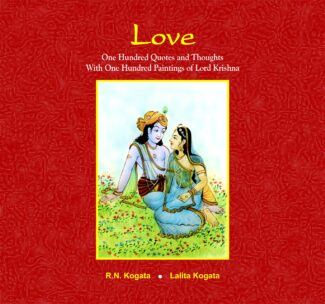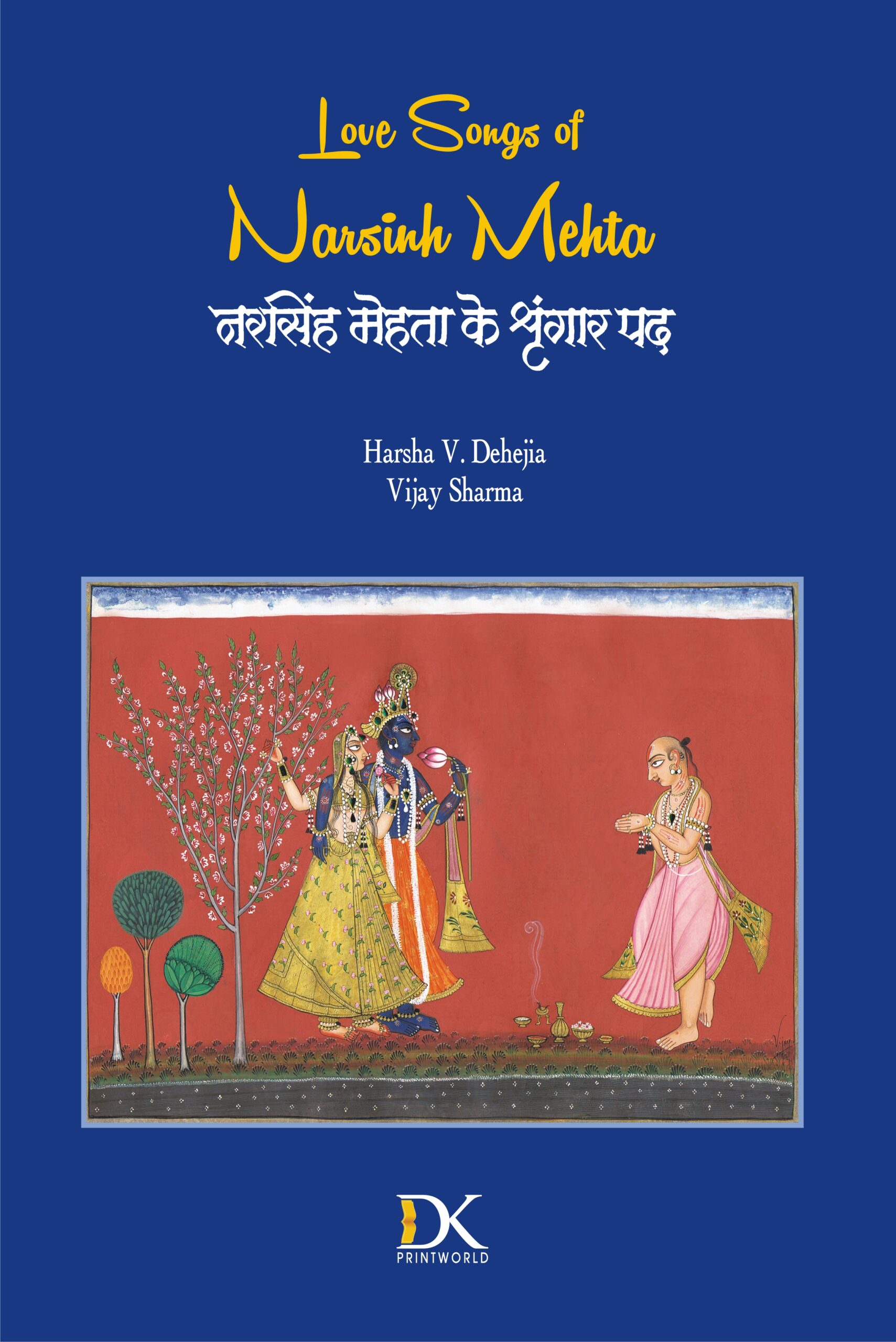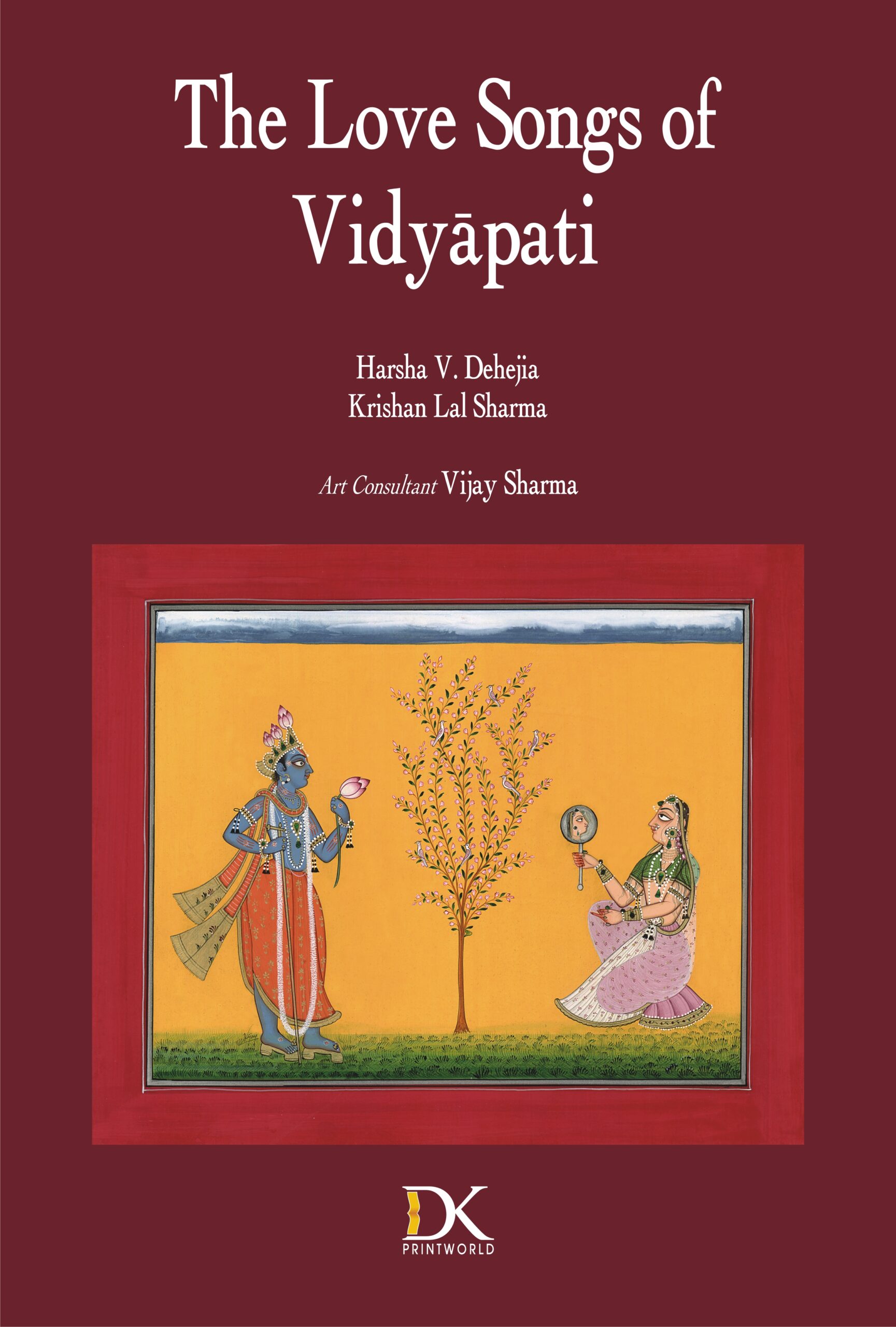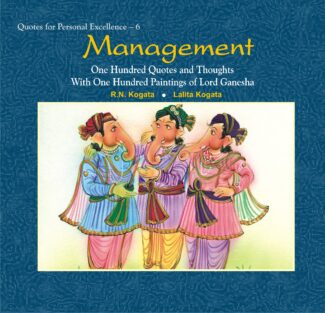Showing 169–180 of 383 results

This edition of Bhagavad Gita elaborates how each of its chapters and even verses leads to the next one, all in line with the overall scheme of thought. Acknowledging Gita as a yoga-sastra (science of dialectics), it explicates how this methodological device strings together all the seemingly contradictory statements; revealing an ineffably uniting experience, befitting a scientifically and practically conceived non-dualism or advaita.
The Bhagavad Gita, in this commentary is realized as a philosophical treatise of universal significance, having a bearing on the personal existence of each of us, as it is inseparably one with the existence of the whole. Taking cognizance of the overall development of the thought in the text, it enunciates the first half as a visualization of the oneness of the total system of existence and life with one Absolute Reality; with the second half insightfully proclaiming the unity of every individual, while maintaining ones characteristics, with the Cosmic Form, the concrete version of the Absolute or Bhagavan. It elaborates how each of its chapters and even verses leads to the next one, all in line with the overall scheme of thought. Acknowledging Gita as a yoga-shastra (science of dialectics), it explicates how this methodological device strings together all the seemingly contradictory statements; revealing an ineffably uniting experience, befitting a scientifically and practically conceived non-dualism or advaita. Though written as a sort of varttika to Nataraja Gurus famous commentary on the Gita, this one is appreciable as an independent book, since it delves into the depth of each verse directly in the view of the core philosophical vision, the Gita intends to communicate.

This edition of Bhagavad Gita elaborates how each of its chapters and even verses leads to the next one, all in line with the overall scheme of thought. Acknowledging Gita as a yoga-sastra (science of dialectics), it explicates how this methodological device strings together all the seemingly contradictory statements; revealing an ineffably uniting experience, befitting a scientifically and practically conceived non-dualism or advaita.
The Bhagavad Gita, in this commentary is realized as a philosophical treatise of universal significance, having a bearing on the personal existence of each of us, as it is inseparably one with the existence of the whole. Taking cognizance of the overall development of the thought in the text, it enunciates the first half as a visualization of the oneness of the total system of existence and life with one Absolute Reality; with the second half insightfully proclaiming the unity of every individual, while maintaining ones characteristics, with the Cosmic Form, the concrete version of the Absolute or Bhagavan. It elaborates how each of its chapters and even verses leads to the next one, all in line with the overall scheme of thought. Acknowledging Gita as a yoga-shastra (science of dialectics), it explicates how this methodological device strings together all the seemingly contradictory statements; revealing an ineffably uniting experience, befitting a scientifically and practically conceived non-dualism or advaita. Though written as a sort of varttika to Nataraja Gurus famous commentary on the Gita, this one is appreciable as an independent book, since it delves into the depth of each verse directly in the view of the core philosophical vision, the Gita intends to communicate.

The book deals with aspects of everyday life of the Vedic people seers and the elite as well as that of the common people their housing, mode of production and occupations, social organisation, education, food and drink, entertainment, dress and cosmetics, etc.
Based on a deep analysis of the Vedic literature, the book deals with aspects of everyday life of the Vedic people: their housing, mode of production and occupations, social organisation, education, food and drink, entertainment, dress and cosmetics, etc. Tracing the influence of Vedic learning on Upanishads and Såtra literature which have also been referred to here for details on the Vedic people and their traditions, this study focuses on the lifestyle of seers and the elite as well as that of the common people and stresses the importance of the ritualistic context in discussing aspects of daily life like preparing of food and food-eating habits, style of dressing, building of houses and so on. It deals with the Vedic peoples approach to life, covering points such as their attitude towards knowledge and their quest for Brahman, their view of death and their yearning for heaven. This publication also examines the growth of the Vedic tradition from one based on the minimum requirements of life to a tradition involving refinement of things a system of writing and a complex religion based on deep philosophical study and explanations of cosmology. The book will be useful to all students and scholars of ancient Indian religion and culture.

Yoga is the science of harmonious union with one’s own self, the world, and the cosmic law that governs the entire universe. This book of commentary by Guru Nitya Chaitanya Yati unlocks the secrets of this perennial wisdom and shows how pertinent and valuable the transforming path of yoga is to our lives today.
At the turn of the twentieth century a wise teacher from south India described the culmination of Yoga in a very alluring manner: When mind, the bumble bee, sips the honey-like sweetness of ones own bliss, fluttering ceases and it is drawn into union. This poetic description given by Narayana Guru echoes and elaborates the definition of Yoga given in one of the foundation texts of Yoga, the Bhagavad Gita (VI:23): Yoga is disaffiliation from the context of suffering. These definitions are not academic. They speak directly to our experience of life, which can range from being punctuated by suffering to being permeated by it. They also speak to our constant yearning and search for happiness. Yoga originated as a natural response to this human condition. It is why it was developed, why its teachings have been followed, elaborated, and passed down from time immemorial to the present. Yoga is the science of harmonious union with ones own self, the world, and the cosmic law that governs the entire universe, ranging from the cognizing of a sensation to the formation of a galaxy. This commentary by Guru Nitya Chaitanya Yati unlocks the secrets of this perennial wisdom and shows how pertinent and valuable the transforming path of Yoga is to our lives today. A special appendix, Letters to an Aspiring Yogi, offers a basic orientation and initiation into the practice of Yoga, which, as Guru Nitya makes clear, Is a common path for all human beings, irrespective of their cultural, geographic, and religious affiliations.

The book unravels the glorious past of Kashmir, discussing its importance as the centre of Sanskrit learning in the bygone eras. It highlights the regions achievements in music, dance, drama, sculpture, language and literature, and philosophy marked by the artistic and literary contributions of Jayaditta, Bhatta, Jayadhara, Pingala and Abhinavagupta, and many others.
The Land of Kashmir, celebrated as paradise on earth for its scenic beauty, has an equally enchanting historical and cultural past: this is the place symbolising Indias cultural unity, where different cultures have prospered at different times, where scholars from all over India and the distant lands of Mesopotamia, Persia and China converged to imbibe learning in ancient times. The author, S. Sapru here unravels the glorious past of Kashmir; he discusses its importance as the centre of Sanskrit learning in the bygone eras; its achievements in music, dance, drama, sculpture, language and literature, and philosophy marked by the artistic and literary contributions of eminent men like Jayaditta, Bhatta, Jayadhara, Pingala and Abhinavagupta. Referring to various historical works and combining facts with legend, folklore and impressions from oral traditions, he presents a graphic picture of life and times in the valley in the past that deals with a range of themes like the lands mythology, statecraft, trade links, urban centres, tax system, system of crime and punishment and an ancient tourists impressions of the valley. Through a smooth?flowing narrative that makes the book extremely readable, the author points out that there is more to Kashmir than the present?day spate of violence; the land and its people have an essential Indianness common to other people of India and Kashmirs links with the rest of India cannot be severed.

Love is God and God in love; it is universal and knows no limits. This work of 100 valuable and carefully chosen quotes with aesthetic illustrations defines the virtues of love in its aestheic dimensions in a crisp and concise manner and projects it as the nature’s most prized gift to the mankind.
Love is God and God in love; it is universal and knows no limits. This work of 100 valuable and carefully chosen quotes with aesthetic illustrations defines the virtues of love in its aestheic dimensions in a crisp and concise manner and projects it as the nature’s most prized gift to the mankind.

Love Songs of Narsinh Mehta is a commentary on the love songs of Narsinh, adi-kavi of Gujarat. Narsinh sings the glory of Krishna in total devotion as if Krishna is sitting in front of him. For him, Krishna is divine and human, both at the same time. Being Krishnas love, he brings in all emotions and cues of devotional love to his poetry.
Love Songs of Narsinh Mehta is a commentary on Narsinh Mehtas love songs. Narsinh (1408-65), a Vaishnava bhakti poet of medieval India, is considered as the adi-kavi of Gujarat. He is also regarded as a shringara kavi, a poet of romance. The quintessence of his bhakti is prem and his prem has inherent bhakti, and therefore his poetry is regarded as shringara bhakti kavya. Essentially shringara is the romantic celebration of the other, and when Narsinh’s other is none other than Krishna, his shringara kavya becomes Krishna bhakti, where Krishna is both divine and human, at the same time. Singing for Krishna, Narsinh celebrates his swami through amorous verses and divine surrender like Jayadeva.
He sat in a temple and relentlessly sang for his Lord, living through absolute poverty. Nothing made him more jovial than singing the glory of his Krishna. The only man for Narsinh is Krishna, and for the latter Narsinh is a woman at heart. Narsinh, through his songs, brings in the cue of all romantic feelings and moments, recreates the idyllic Vrindavana in ones mind, and he returns that Vrindavana a Vaikuntha with the footfalls of his Krishna.
Through this commentary, the author Harsha V. Dehejia introduces one to the fullness of Narsinhs poems, thereby making one known to Narsinh in and out.

This portfolio, based on the ten Maithili love songs of Vidyapati, presents lovely paintings on the varied love moods of Radha: her sensuous charm, innocence, longing for Krishna, surrender to love, etc.
Vidyapati (c. 13521448), called second Jayadeva in his lifetime, is immersed, charged and inspired by the love of Radha and Krishna. He wrote emotionally-intensive love songs in Maithili, for the queens of Shiva Simha, his patron, and the common folk. Though drawn inspiration from Jayadeva, more than him, Vidyapati presents in his poetry a rare, tender and sensitive understanding of Radhas psyche. In his love songs Radha, not Krishna, is in the centre stage and through his nayika Vidyapati is reaching out to each and every woman in Mithila.
Vidyapati presents his songs from a womans heart, and describes his nayikas slowly awakening youth, her sensuous beauty, her coyish charm, her naïve innocence, her surrender to love and her anguish on being neglected. She is invariably sensual, spiritual, physical and emotional. Though she did not inspire painters of the time, she ruled the hearts of the people of Mithila. Vidyapatis love songs are written in honeyed words and are sung with mellifluous notes in homes, fields, chowks and havelis, across eastern India. And thus he still rules their heart.
This portfolio, based on the ten love songs of Vidyapati, presents lovely paintings on the varied love moods of Radha, the love queen. In doing so, different artists have displayed their dexterity in Jaipur, Caurapancashika, late Mughal, Manaku, Kishangarh, Jain, Kangra and Basohli styles.

From time immemorial a family Þ consisting of father, mother, son, his wife, and their childern Þ has been accepted as a sacred institution in all societies Þ urban, rural, tribal or uncivilized, or even among animals to a certain extent. In the family, besides love and affection, the main factors cementing the bond between members are some virtues and morals like obedience, faithfulness, honesty, and, above all, chastity, not only for women but also for the men. In Hindu thought Lord Shiva and Goddess Parvati are considered the ideal parents as well as the ideal couple. In four books Þ Pita, Maa, Pati and Patni Þ pleasingly embellished with self-explaining paintings, Mr K.N. Kogata and Mrs Lalita Kogata have extolled the roles, activities, and moods of these important members of the first family with charming and delightful verses.
Sree Maatre Namah Pranaams to mother. With these words starts Latitaa Sahasranaam, or the 1,000 names of Devi. The privilege you can take with your mother, you cannot take even with your father. During the nine months a baby is inside the mother, the mother gives her own food, blood and nourishment to the unborn foetus so that it could develop into a fullgrown baby. During the nine months and during child-birth, the amount of fasts, hardships, worries, discomfort, sleeplessness, and pain a mother undergoes even if you give her the whole world it is no compensation at all. Our epics, Puranas, Upanishads, etc. all extol the highest importance of a mother in society. Mother is equally revered in all cultures throughout the world. In Annapoornaashtakam, Shankaracharya says annapoorne sadhaaporne. . . maataa cha parvati devi, pitaa devo maheshwara. . . . That means, Shankaracharya sees Parvati as the universal mother and lord Shiva as the universal father. In a similar way, the Kogatas have seen Parvati and Shiva, and have beautified this book with pleasing illustrations of both of them in different activities and moods, followed by charming and delightful verses.

Diabetes is a malice threatening the very existence of the modern society. This book educates one how to diagnose type 1 and type 2 diabetes, how to test them, what all precautions are needed, how to deal with diabetes during pregnancy, what is diabetic foot and how to care it, the available medicines and their effects, what all exercises one should do to control diabetes, diet specifications, precautions to be taken while travelling, among many other pieces of information, that help a diabetic to lead a normal life.
India is under the grip of a malady called Diabetes. According to WHO and International Diabetes Federation (IDF), India is all set to become the diabetic capital of the world. Of the 31 crore estimated diabetic patients all over the world, India has more than six crore people affected with this disease. This book addresses many an issue faced by the diabetic patients, both type 1 and type 2. It thus provides detailed information on the genesis, restraints and cure, short- and long-term effects of diabetes. It also addresses a number of challenges associated with diabetes.
In a wide spectrum, the book talks about this silent killer and its symptoms, diagnosis, monitoring of blood glucose, its treatment, desired exercises to keep diabetes under control, changes needed in lifestyle to combat diabetes, diet on special occasions, sugar tablets, herbal medicines, insulin therapy, how to face emergency situations in diabetes, complications due to diabetes, relationship between diabetes and (1) heart disease, (2) eyesight problems, and (3) kidney disorders. It also delves deep into the implications of diabetic foot, fluctuations in body weight due to this disease, other common ailments in diabetics, targets of controlling diabetes, pregnancy and diabetes, travelling with diabetes, need of routine diabetic examination and tests, impact of alcohol on a diabetic, diabetes in children and the aged, guidelines for fasting, etc.
The book also educates one on what to eat and what not, to keep diabetes under control. A detailed diet chart with calorie calculation is also given for a diabetic to follow in day-to-day life. In addition, it provides quite a lot of data related to our physical fitness, be it weight, height, food recommendations for non-veg people, or calorie value conversion of different food items. In a nutshell, this guidebook is a must-need for a diabetic and must-read for his family members as there is no permanent cure available for diabetes as yet, and its management is equally important like its treatment.

The book Make Time for Yourself Its Your Time is a text written from a very personal standpoint, in the context of the authors spiritual life as a monk. Nothing in this world has eternal value. Use your time and dont waste it. . . . Time is for most of us a luxury good. Making time for yourself and giving time to others is a source of joy that enriches our lives. The quiet time we devote to prayer or meditation gives us strength to master our lives and enhances our spirituality.
The book Make Time for Yourself Its Your Time is a text written from a very personal standpoint, in the context of the authors spiritual life as a monk. Nothing in this world has eternal value. Use your time and dont waste it. . . . Time is for most of us a luxury good. Making time for yourself and giving time to others is a source of joy that enriches our lives. The quiet time we devote to prayer or meditation gives us strength to master our lives and enhances our spirituality.

Management pervades all facets of life organizations, groups, societies, systems, strategies, operations, perception of the masses, technological changes and so on. The 100 quotations in this book are a source of great inspiration in enhacing our capability and efficiency. Each quote is conjoined with a stimulating painting of Lord Ganesha, the Lord of Peace, Prosperity and Wisdom.
The term Management pervades all facets of life, not in managing only a business, an organization, or a society. It certainly is a larger horizon, impliciting the function more complex. The authors, therefore, present 100 pertinent quotations on management, covering all aspects. Each quote is conjoined with a stimulating painting of Lord Ganesha, the Lord of Peace, Prosperity and Wisdom, matching the theme. While many of these thought-provoking and enlightening quotes are from towering personalities, some are the own creations of the authors.
Systems, strategies, operations, perception of the masses, technological changes, and conventional factors of production, all fall under the ambit of Management. And managing them is exacerbating, at times. The quotes in this book, with deep meaning, not only become a source of inspiration, but also help one to improve one’s efficiency and add sparkle to his/her everyday work and life.
| There are no products |